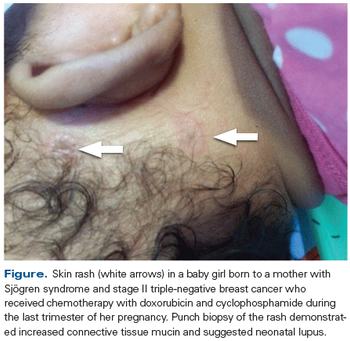
Researchers have uncovered a potential role of the bacteria found within breast tissue in the prevention and progression of breast cancer.

Your AI-Trained Oncology Knowledge Connection!


Researchers have uncovered a potential role of the bacteria found within breast tissue in the prevention and progression of breast cancer.

About 1 in every 5 older women who underwent treatment for early-stage breast cancer experienced a functional decline and/or died within 1 year of initiating treatment.

Researchers at Mount Sinai have made a crucial discovery in breast cancer by identifying a protein called CBX8, which promotes tumor growth.

A new combination therapy is showing promise for treating advanced solid tumors and may especially be beneficial in patients with recurrent or metastatic triple-negative breast cancer.

Maintenance therapy with low-dose cyclophosphamide and methotrexate in women with hormone receptor-negative early breast cancer did not improve disease-free survival.

A 34-year-old, gravida 2, para 1, previously healthy African-American woman presented with a right breast mass on self-examination in the second trimester of pregnancy.

As a collaborative effort of several cancer centers throughout the United States, teams of researchers have completed the first large-scale proteogenomic study of breast cancer.

Among breast cancer survivors, black women are far less likely to receive BRCA testing and preventive surgery than white or Hispanic women.

OPT-822/821 vaccination did not show any improvement in progression-free survival as maintenance therapy compared with placebo for metastatic breast cancer. But in those patients who had an immune response, the vaccine did appear to show activity.

Heavily pretreated women with metastatic breast cancer had significant improvements in progression-free survival and overall response rate when treated with the combination of utidelone plus capecitabine compared with capecitabine alone.

Postmenopausal women with early breast cancer benefit from extending AI therapy with letrozole from 5 to 10 years, and show no worsening of quality of life.

Directly engaging and recruiting patients online using social media will allow broader participation in cancer genomics research and hasten clinical advances.

The investigational biosimilar MYL-1401O has comparable efficacy and safety to the FDA-approved trastuzumab in metastatic HER2-positive breast cancer.

ESR1 mutations, which are believed to convey aromatase inhibitors (AIs) resistance in ER-positive, metastatic breast cancer, are not associated with tumor resistance to fulvestrant.

The incidence of cardiovascular events is reduced with increasing physical activity among women with nonmetastatic breast cancer.

People who carry a germline breast cancer susceptibility mutation can still substantially lower their risk of developing breast cancer, according to a new study.

While metabolic pathways in breast cancer have been difficult to identify, researchers at the University of California Berkeley have discovered a new target in triple-negative breast cancer.

The accuracy of interpreting a breast cancer screening mammogram is not diminished as clinicians get toward the end of a session.

Twenty-five–year results of a Swedish study found that 2 years of adjuvant tamoxifen provides a long-term survival benefit in premenopausal women with estrogen receptor–positive breast cancer.

There is significant interest in investigating immunotherapeutic strategies to be used for the treatment of breast cancer patients. One form of immunotherapy under active investigation is the cancer vaccine. Vaccines are a form of active immune therapy designed to stimulate the immune system to recognize tumor cells as foreign.

Perhaps we can now hope that primary immunoprevention of cancers that are engaged as people age may receive the attention, support, and legitimacy that will soon result in similar breakthrough stature.

It may be possible to remove deleterious germline BRCA1 mutations through alternative mRNA splicing and prevent drug resistance in some breast and ovarian cancer patients.

The KEYNOTE-012 trial shows that pembrolizumab has activity and acceptable toxicity as single-agent therapy in advanced triple-negative breast cancer.

Cognitive behavioral therapy may reduce long-term memory-related issues linked to chemotherapy treatment in cancer survivors.

Researchers at Vanderbilt-Ingram Cancer Center recently published a study in the journal Science Translational Medicine that a targeted therapy for TNBC has been discovered, which may be significant since TNBC is the only type of breast cancer for which there are no approved targeted therapies.